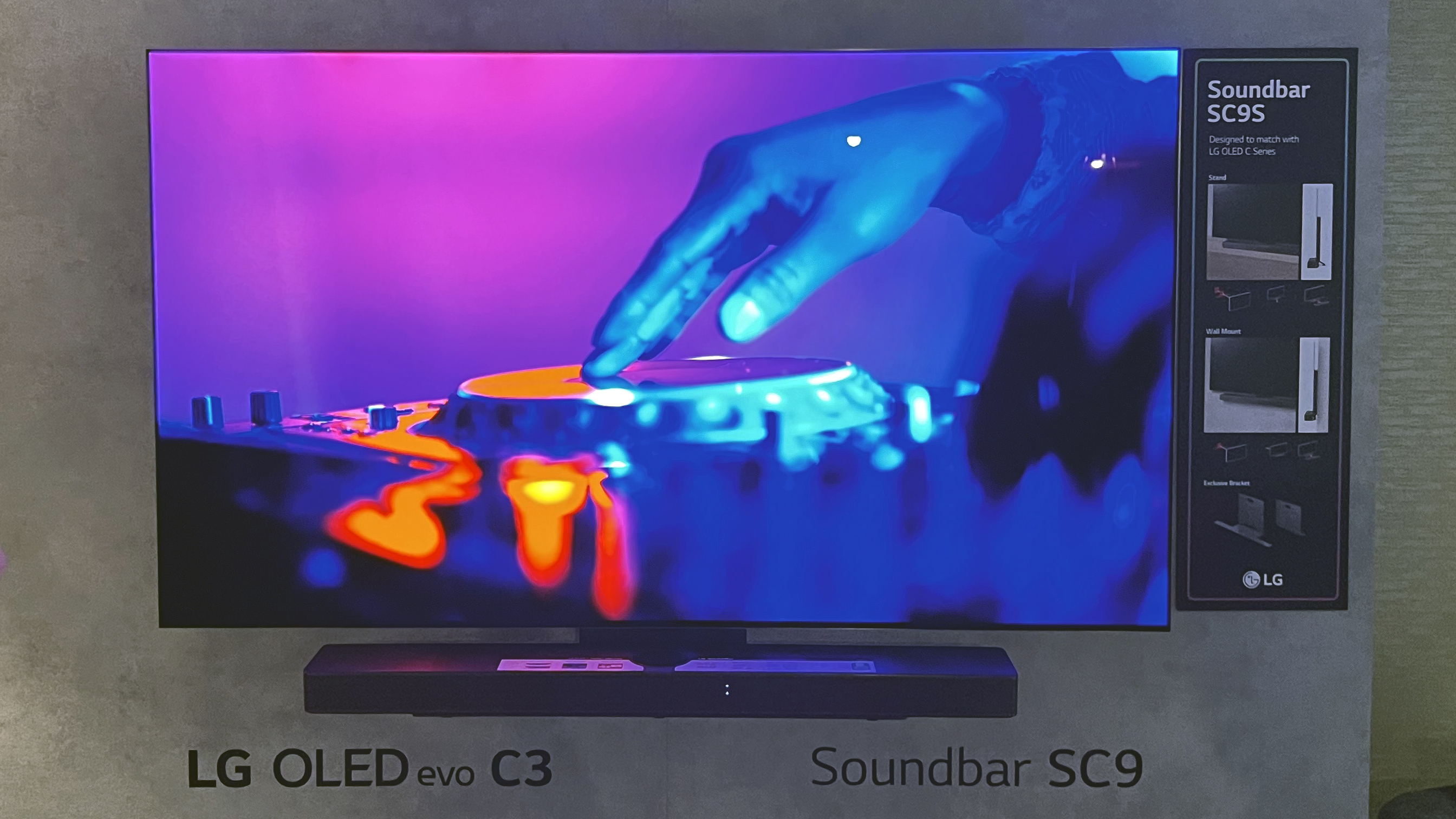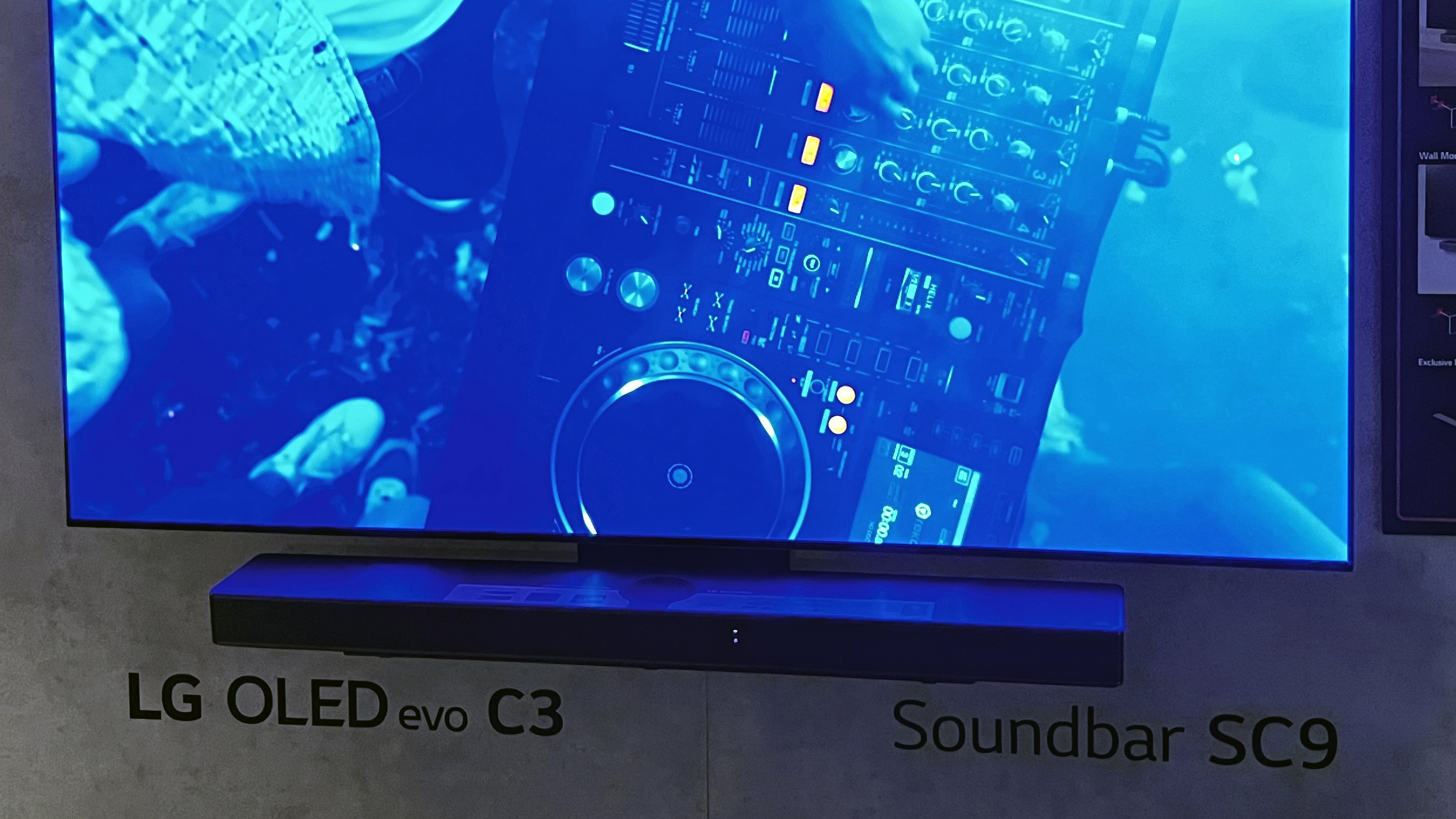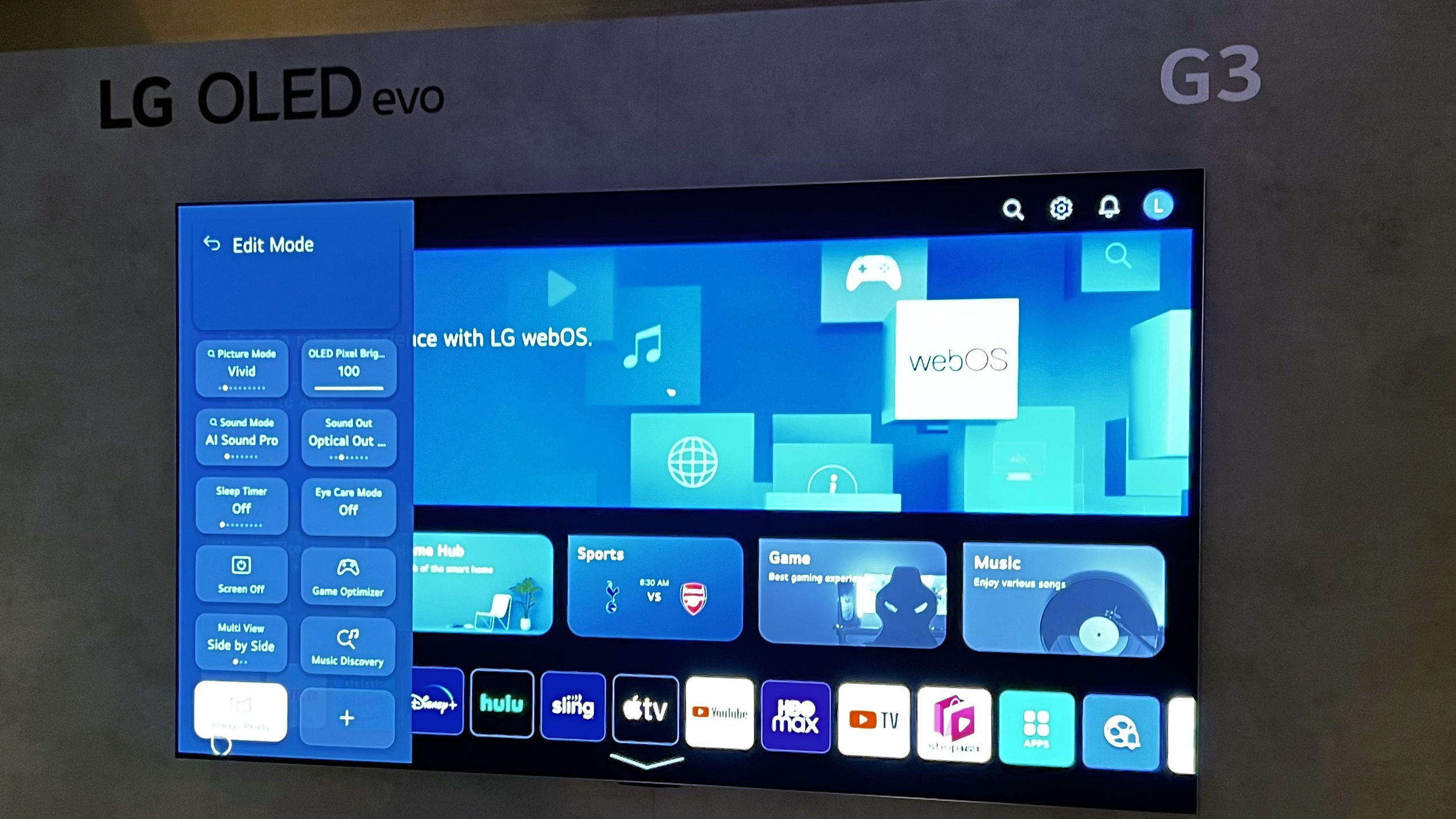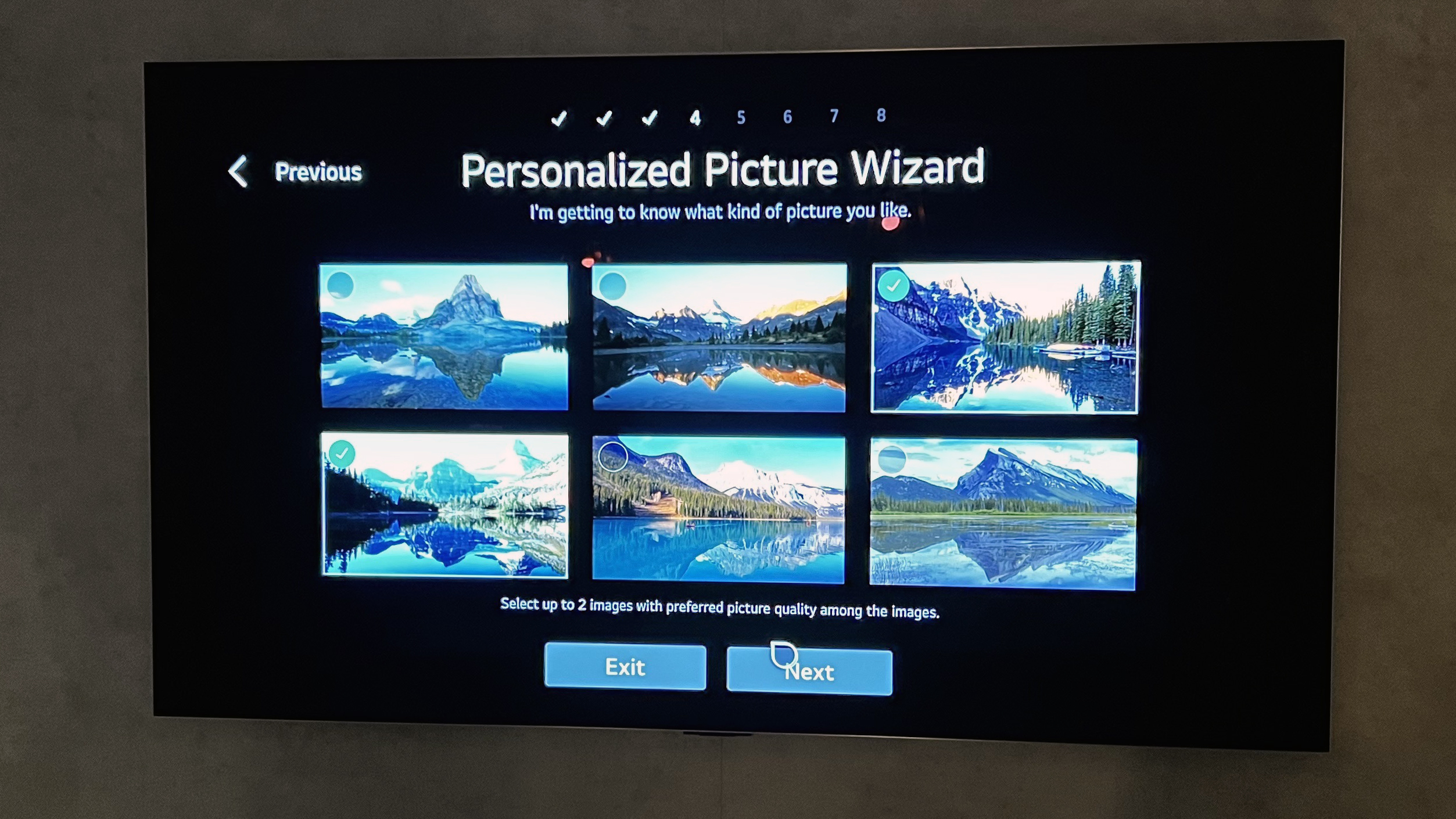Here at CES 2023, I got to see some of LG’s latest range of OLED TVs, including the brighter LG G3, the wireless LG M3 (which I wrote about here), and the LG C3 – which will be the most popular of these three, no question.
It’s the successor to the LG C2, which we rate as the best TV available today when balancing price, image quality and features. So obviously, I was excited to get a look at it, but as anyone who’s already looked at the specs will know, there’s not much change here when compared to the LG C2 from 2022.
The OLED screen type used is the same, it comes in the same sizes, it has the same HDR and gaming features support, and looks pretty much the same.
There are subtle changes, though. Some models now include carbon fiber in the build to make them lighter, which is better for wall-mounting, and just for when you’re installing and handling it.
The biggest change is the image processing, which is now driven by the Alpha9 Gen6 chip, which is LG’s latest and greatest. LG was able to provide a few specifics for how things are changed here, such as the fact that every image is now divided into 20,000 different zones to be individually assessed for HDR tone and color mapping, meaning that small slivers of shadow can be processed differently to areas of bright light next to them, meaning the TV can draw out as much detail in both as possible while maintaining HDR punch.

LG says that the new chip should produce improvements in colors, sharpness, and the sense of really ‘being there’ in front of whatever you’re looking at. The company also said that, although it’s not saying there will be any measured increase in brightness in the LG C3, there may be perceptual improvements in brightness due to how contrast is being handled differently.
If these sound like they would be very subtle improvements, then… yes, that’s what my experience with the set was like, though obviously it was just a brief demo, not any kind of deep test.
From this quick look, I’d be hard pressed to tell you about any clear and obvious picture improvement over the LG C2. And it seems like it’ll be same case when it comes to sound – it appears to be about the same level of depth and detail as the (surprisingly clear and spacious AI-powered) audio of the C2.
Companies love synergy
There is one notable new feature when it comes to sound, which is LG’s Wow Synergy feature. If you’re familiar with the Q-Symphony feature found on most of the best Samsung TVs, you’ll know what to expect here: when you connect an LG soundbar with Wow Synergy to the TV, the soundbar and TV speakers will combine into one bigger and more spatial-friendly package, rather than the soundbar replacing the TV speakers totally.
It sounds great in practice – there’s a clear improvement in positional sound for what’s on the screen, and it feels like the mids and treble can breathe a bit more than when coming from the soundbar alone.

Compatible soundbars will include some new models from LG, but also models in the 2022 range, which will be updated to include the feature. The LG S95QR, for example, will not be replaced this year – it’ll stay as LG’s flagship Dolby Atmos soundbar, and will get this new functionality.
Part of me wonders if taking the same approach to the C2/C3 TV itself might have suited LG better this year.
The fundamental problem the new TV has is that the old TV will remain on sale for a while, now at extremely aggressive prices. That wasn’t a huge problem for the LG C2 when it replaced the LG C1, because it offered a new brighter panel, better sound and new sizes as well as better processing.
Unless the LG C3 really surprises us when it arrives on our test benches, I’m worried that it won’t make much of a case for itself as long as the C2 is around and cheaper. However, being a very close replacement for the best OLED TV for most people is hardly a terrible fate – as long as the competition doesn’t get too aggressive this year.
Smarter webOS
One welcome change to the C3 (as well as the other models) is a new version of webOS that has some great new organization features. It’s inching more to becoming like Android (on phones, not TVs) with a new notification icon at the top now, so any useful messages can be found easily, and can stay out of your way the rest of the time. You also now have the ability to group any apps you have into folders.

There’s also a Quick Menu, which very much like Quick Settings on Android or Control Center on iPhone. You can choose what appears here, and you can have instant access to picture settings, audio settings, sleep timer, eye-care mode, Game Optimizer, split view… whatever you want. It means you might actually use these useful features most people can’t be bothered to hunt down from their remote! Or to change between Sport and Movie modes for different content, like you ideally should be doing, but basically no one actually does.
And on the Home screen, you’ll now have tabs for the different services you have, while will make it super-easy to find things you’ve recently been watching. It means you can quickly access way more shows from one screen, but without things becoming any more cluttered than before. I like this a lot – and it was smooth in LG’s demo (which was on the G3, but the same system and processor is in the C3, so it should be identical).

One of the most interesting features is the Personalized Picture Mode. Instead of sticking with preset or diving into complex menus, you can now go through a series of screens where webOS will show you images and ask you to pick which two you like the look of most. They’re not identical images with different presets applied – they’re actually all totally different images. It’s assessing your aesthetic sensibility in a wide scale, and then the final result creates a mode for you based on 59 million possible computations.
LG is really letting a genie out of a bottle here – pushing the picture that people will see more and more into the subjective realm. I’m actually really excited by the idea, but we’ll have to see what happens with the results in real life, and whether they steer too far from accurate-feeling pictures.
If you want to read more about game-changing OLED TVs this year, read about why the new Samsung S95C QD-OLED is the best TV we saw at CES.




